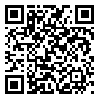Volume 11 - Summer Supplementary
Ann Appl Sport Sci 2023, 11 - Summer Supplementary: 0-0 |
Back to browse issues page
Download citation:
BibTeX | RIS | EndNote | Medlars | ProCite | Reference Manager | RefWorks
Send citation to:



BibTeX | RIS | EndNote | Medlars | ProCite | Reference Manager | RefWorks
Send citation to:
Lee M, Lee J, Kwon M G. The Effects of Musculoskeletal Training and Stretching on the Duration of Vocalization Time. Ann Appl Sport Sci 2023; 11 (S1)
URL: http://aassjournal.com/article-1-1131-en.html
URL: http://aassjournal.com/article-1-1131-en.html
1- School of Music and Arts, College of Music and Arts, Dankook University, Jukjeon, Korea
2- Korea Institute for Applied Anatomy, Korea National Sport University, Songpagu, Seoul, Korea
3- Korea National Sport University, Seoul, Korea ,mrkorea97@knsu.ac.kr
2- Korea Institute for Applied Anatomy, Korea National Sport University, Songpagu, Seoul, Korea
3- Korea National Sport University, Seoul, Korea ,
Abstract: (3378 Views)
Background. Musculoskeletal training and stretching aim to maximize vocalists’ physical capacity.
Objectives. This study aimed to determine the effects of core training and stretching, on the physical capacity of vocalists.
Methods. The participants included 14 vocalists, divided into the core training group and the control group. The training was performed for 75 minutes per session for 8 weeks. The maximum phonation time was measured before and after the experiment to prove the effectiveness of this study.
Results. The exercise and stretching programs led to significant improvements in the physical factors associated with the increase in maximum phonation time.
Conclusion. Training programs targeting specific areas that require improvement will increase singing ability.
Objectives. This study aimed to determine the effects of core training and stretching, on the physical capacity of vocalists.
Methods. The participants included 14 vocalists, divided into the core training group and the control group. The training was performed for 75 minutes per session for 8 weeks. The maximum phonation time was measured before and after the experiment to prove the effectiveness of this study.
Results. The exercise and stretching programs led to significant improvements in the physical factors associated with the increase in maximum phonation time.
Conclusion. Training programs targeting specific areas that require improvement will increase singing ability.
Full-Text [PDF 491 kb]
(1624 Downloads)
APPLICABLE REMARKS
APPLICABLE REMARKS
• Providing training programs suitable for specific areas requiring improvement will positively affect vocalists.
Type of Study: Original Article |
Subject:
Motor Control and its Related Branches
Received: 2022/06/11 | Accepted: 2022/08/13
Received: 2022/06/11 | Accepted: 2022/08/13
References
1. Daniel JC, Richard DA, Joseph CS. Vocalization subsystem responses to a temporarily induced unilateral vocal fold paralysis. Journal of Speech, Language, and Hearing Research. 2018;61(3):479-495. [DOI:10.1044/2017_JSLHR-S-17-0227] [PMID]
2. Johnson AM, Sandage MJ. Exercise Science and the Vocalist. Journal of Voice. 2021;35(3):376-385. [DOI:10.1016/j.jvoice.2019.09.007] [PMID] []
3. Siff MC. Functional training revisited. Strength and Conditioning Journal. 2002;24(5):42-49 [DOI:10.1519/00126548-200210000-00011]
4. Liebenson C. Functional training handbook. Lippincott Williams & Wilkins; 2014.
5. Janda V. Muscles, central nervous motor regulation and back problems. In The neurobiologic mechanisms in manipulative therapy. Springer, Boston, MA. 1978;27-41. [DOI:10.1007/978-1-4684-8902-6_2]
6. Janda V. On the concept of postural muscles and posture in man. The Australian Journal of Physiotherapy. 1983;29(3):83-84. doi: 10.1016/s0004-9514(14)60665-6 [DOI:10.1016/S0004-9514(14)60665-6] [PMID]
7. Cook G. Movement: Functional movement systems: Screening, assessment. Corrective Strategies (1st ed.). Aptos, CA: On Target Publications, 2010;73-106.
8. Cureton TK. Relationship of physical fitness to athletic performance and sports. Journal of the American Medical Association. 1956;162(12):1139-1149. [DOI:10.1001/jama.1956.02970290035010] [PMID]
9. Liu CJ, Shiroy DM, Jones LY, Clark DO. Systematic review of functional training on muscle strength, physical functioning, and activities of daily living in older adults. European review of aging and physical activity. 2014;11(2):95-106. [DOI:10.1007/s11556-014-0144-1]
10. Porto JM, Nakaishi APM, Cangussu-Oliveira LM, Júnior RCF, Spilla SB, de Abreu DCC. Relationship between grip strength and global muscle strength in community-dwelling older people. Archives of gerontology and geriatrics. 2019;82:273-278. [DOI:10.1016/j.archger.2019.03.005] [PMID]
11. Brill PW, Couzens GS. The Core Program. 1st ed New York: Bantam Books 2002:1-231.
12. Handzel TM. Core training for improved performance. NSCA's Performance Training Journal. 2003;2(6):26-30.
13. Ekstrom RA, Donatelli RA, Carp KC. Electromyographic analysis of core trunk, hip, and thigh muscles during 9 rehabilitation exercises. Journal of orthopaedic & sports physical therapy. 2007;37(12):754-762. [DOI:10.2519/jospt.2007.2471] [PMID]
14. Ju-sik P. The Effect of Functional Training on the Physical Strength Factor of Elite TAEKWONDO Athletes. Kinesiology. 2019;4(1):1-7. [DOI:10.22471/sport.2019.4.1.01]
15. Ford Jr HT, Puckett JR, Drummond JP, Sawyer K, Gantt K, Fussell C. Effects of three combinations of plyometric and weight training programs on selected physical fitness test items. Perceptual and Motor Skills. 1983;56(3):919-922. [DOI:10.2466/pms.1983.56.3.919] [PMID]
16. Inbar O, Kaiser P Tesch P. Relationships between leg muscle fiber type distribution and leg exercise performance. International journal of sports medicine. 1981;2(03):154-159. [DOI:10.1055/s-2008-1034603] [PMID]
17. Reyes A, Castillo A, Castillo J, Cornejo I, Cruickshank T. the effects of respiratory muscle training on phonatory measures in individuals with parkinson's diease. Journal of Voice. 2020;34(6);894-902. [DOI:10.1016/j.jvoice.2019.05.001] [PMID]
Send email to the article author
| Rights and permissions | |
 |
This work is licensed under a Creative Commons Attribution-NonCommercial 4.0 International License. |








